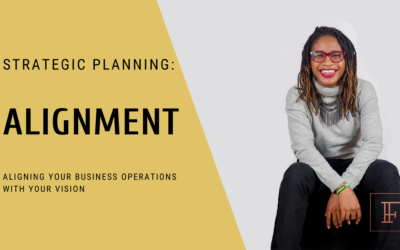Hello lovely, today I’m going to tell you exactly how to understand and connect with your future clients!
In Facebook Groups and Instagram, you’ve probably seen lots of lovely successful female entrepreneurs sharing their success with other women and inspiring them.
You’ve also seen the comments asking them how they did this, how they were able to get so many clients and generate income for their business.
You have most likely seen non-answers such as “You know, by serving your audience” or my personal favorite “by providing value”.
In reality, these answers are technically true, but it also doesn’t really tell you anything.
The bottom line however, is that they were able to win clients because they understood the client needs, connected with and conveyed that understanding to them.
All you need to connect with your client, and to tailor your message to them are 3 things:
- Understand your client’s problem
- Understand the source of the problem
- Understand how exactly the problem has affected them
Sounds easy and generic right? Let’s expand on each of these.
Understanding your client’s problem
Your client’s problem is the problematic situation that made them realize that something is definitely wrong here. It’s not a tiny itch, but a constant source of worry that they might have ignored for a while hoping for it to pass, but instead things got worse.
Let me give you an example of what this would look like for a life coach. While the example is for a life coach, it can be applied to all types of service providers.
Lily is a relationship coach that helps her clients work through their emotional baggage, specifically commitment issues that have affected their romantic relationships.
Now it could be tempting to just say that her client’s problem is “commitment issues” but is that really what her ideal client would call it?
No. They’d probably call it fear or anxiety. Commitment issues to them, is something someone else could have, but not them.
What Lily should do is to analyze the problem in-depth: What exactly is the problem? What does it look like for them?
To Lily’s clients this might look like:
- Fearful-avoidant: “I want a committed relationship, but I am afraid that I may get hurt.”
- Dismissive-avoidant: “I do not need you, nor do I need you to depend on me.”
- Anxious-preoccupied: “I really want to be close to you, but I do not think you want to be close to me.”
By breaking it down from “commitment issues” to either of these 3 Lily knows what words to use in her sales and marketing messages to connect with the types of clients she wants to attract.
Understand the source of the problem
Now that you know the problem, the next step is to understand the source of the problem.
For business coaches, trainers, and consultants, the source of the problem might be misinformation, overwhelm from conflicting resources online, limited experience/training, negative business stories from friends or online, etc.
Using Lily as our example, the source of the problem could be
- Parents’ divorce or marital problems
- Fear of ending up in an unsatisfying relationship
- Media portrayal of the misery of committed relationships
- Damaging previous relationships that included infidelity, abuse, or abandonment
- Complicated family dynamics while growing up
Now that Lily knows the source of the problem she can use it in her marketing and sales messages, to bond and connect with her clients.
“You have commitment issues brought about by your parent’s divorce”does not sound as emotionally resonant as “You want to be in a committed relationship but you’re afraid you’ll end up hurt because you’ve seen it happen with your parents or a loved one.”
The second is a much better message. But until we dug deeper, we wouldn’t get to this point.
Now that you know the problem and the source of the problem. Take it a step further by tying it to the present.
Understand how exactly the problem has affected them
How has this problem affected your client?
On the surface, It might be a string of short-lasting relationships. Digging deeper it might be
- Anxiety
- Paranoia
- Mood disorders
- Eating disorder
- PTSD
- Addiction
- Depression
Now dig even deeper to see what exactly this looks like. What does their paranoia look like, what does their mood disorder look like?
Now you have different sales/marketing messages to put together. You have several scenarios to work with from the problem, problem source, and effect.
You can use this in your blog posts, newsletters, ads, marketing campaigns, etc.
Here’s how it works.
Using the same example as before: Lily the relationship coach that her clients work through their emotional baggage, specifically commitment issues that have affected their romantic relationships.
The copy for her free 20 minutes consultation could be
You want to be in a committed relationship but you’re afraid you’ll end up hurt because you’ve seen it happen with your parents or a loved one.
You don’t want to be that paranoid person, you want a healthy relationship where you trust your partner, and you feel secure that they love you in turn.
Give yourself a point if you can relate to any of these:
- You find yourself checking or wanting to check your partner’s phone
- You are unhappy with how you look and you think your partner
- When you close your eyes you can still see your parents or a loved one’s divorce, and you’re afraid the same thing will happen to you
- You’ve cried yourself to sleep with worry that your relationship is too good to last
- More details about your client’s problem, source of problem, or how it has affected them
- More details about your client’s problem, source of problem, or how it has affected them
- More details about your client’s problem, source of problem, or how it has affected them
- More details about your client’s problem, source of problem, or how it has affected them
- More details about your client’s problem, source of problem, or how it has affected them
- More details about your client’s problem, source of problem, or how it has affected them
If you scored 5 or more points, schedule a free 20 minutes consultation with me, and I’ll do my best to work with you, so you’ll be able to connect with and trust your partner.
This copy directly draws Lily’s ideal client in, gives them something to do, in this case, the tiny list of points, and it lets them see directly all the potential red flags they need to deal with if they truly want a healthy and committed relationship.
Then it follow up with a call to action, that is a logical next step after the list, as the point system has just pointed out all the things lily’s client would like to hide about themselves but know they need to resolve.
Here is why this is so important:
If you target everyone you will target no one, using broad or vague words will not convince anyone to let go of their hard-earned money even if the product or service might benefit them.
Compare the words up to something like
Are you struggling with commitment issues and a string of failed relationships? Schedule a free 20 minutes consultation with me, and I’ll do my best to work with you, so you’ll be able to connect with and trust your partner.
If Lily has a similar client whose issues stems not from a divorce but from a damaging previous relationship that included infidelity or abuse.
She can create a different type of consultation package specifically geared to this. Or she could combine it and could start the copy with
You want to be in a committed relationship but you’re afraid you’ll end up hurt because you’ve seen it happen with your parents, a loved one, or with a previous relationship.
She can then include details about the previous failed relationship in the bullet points list below.
Now, do you see why I’m against vague answers like “Serve your audience” “provide value” “sell the benefit and not the feature”?
If doing this alone, and rewriting your sales and marketing message makes you nervous, it’s okay schedule a 2 and half handholding session with me and we’ll work though this together.
Talk to you soon.
Abbie Nwaocha.



0 Comments